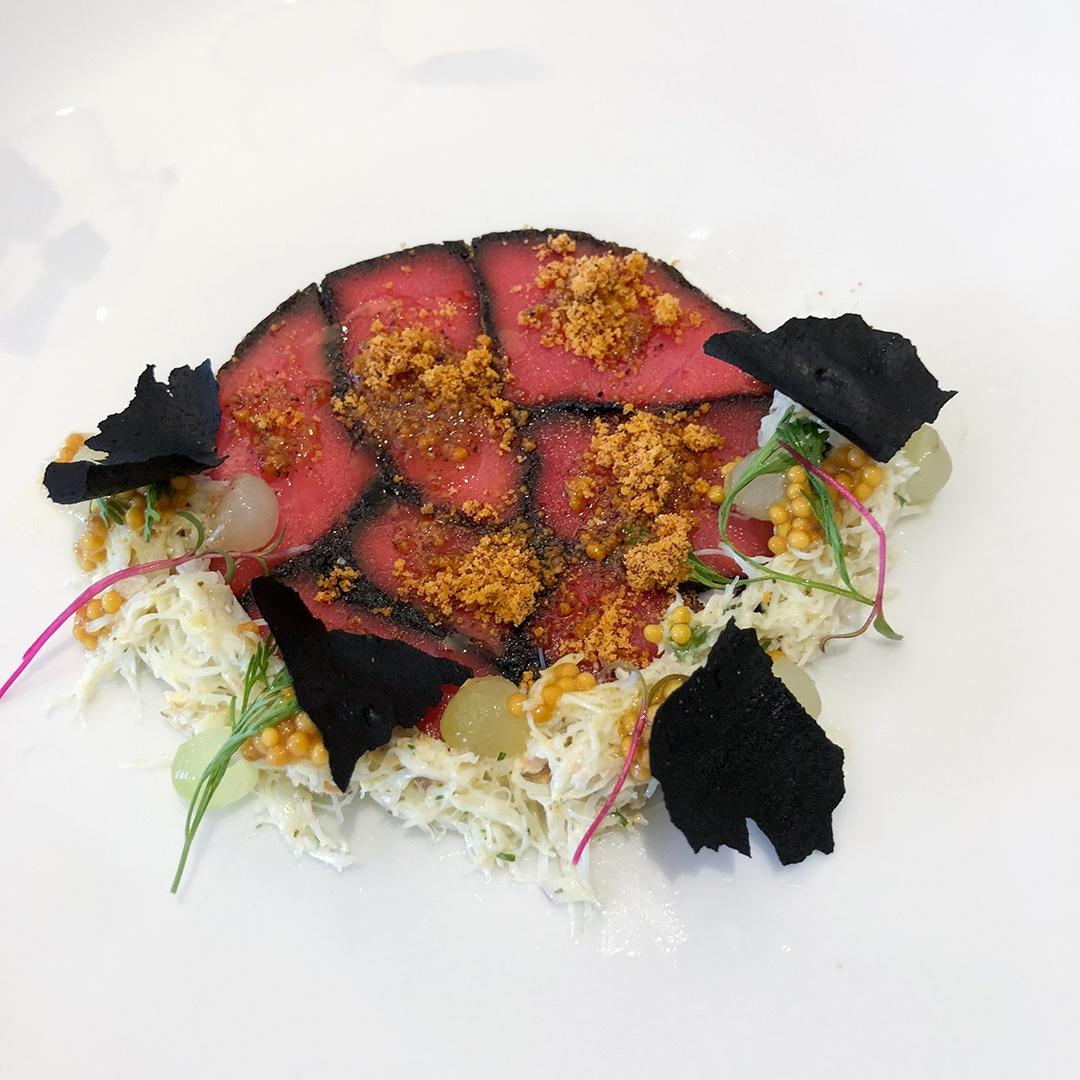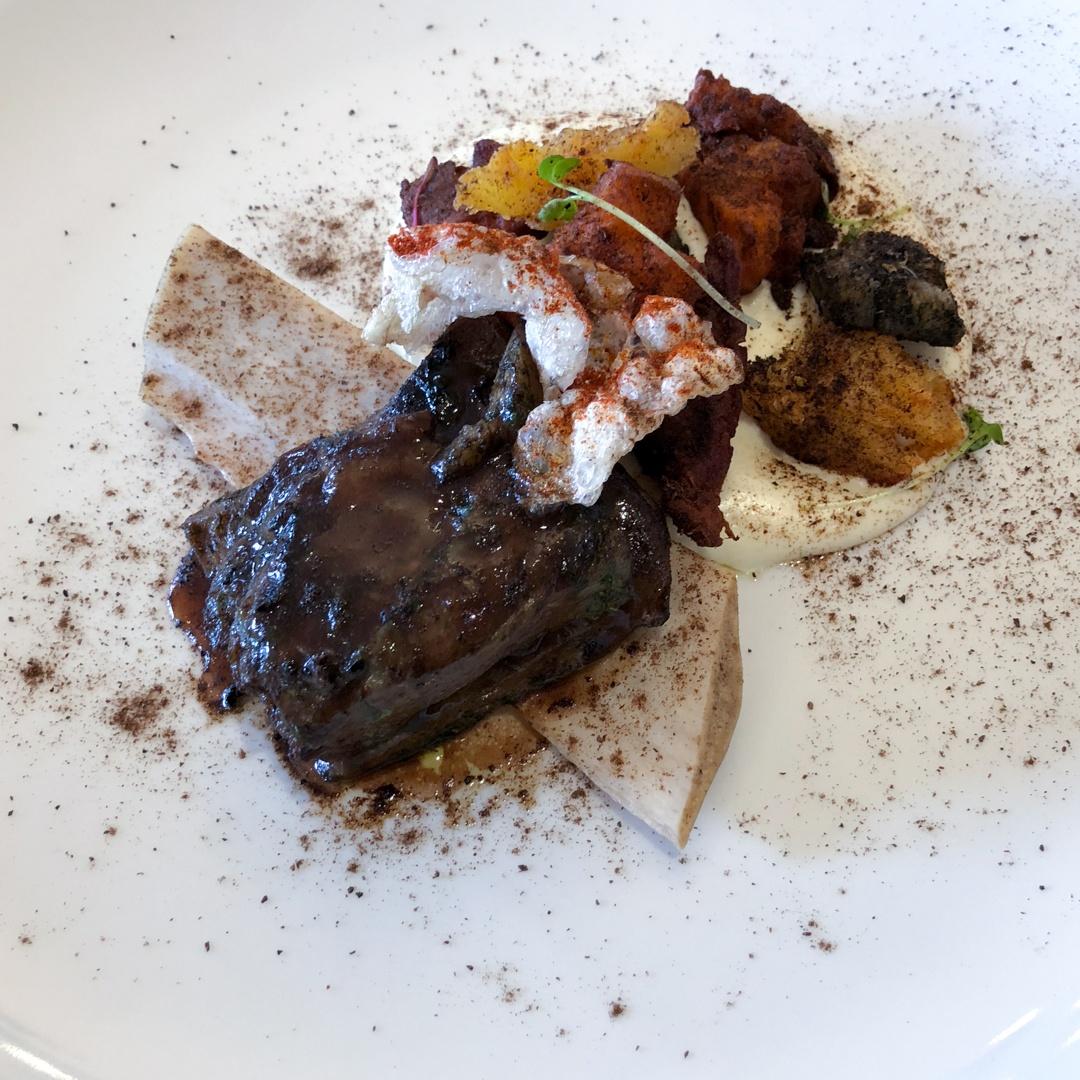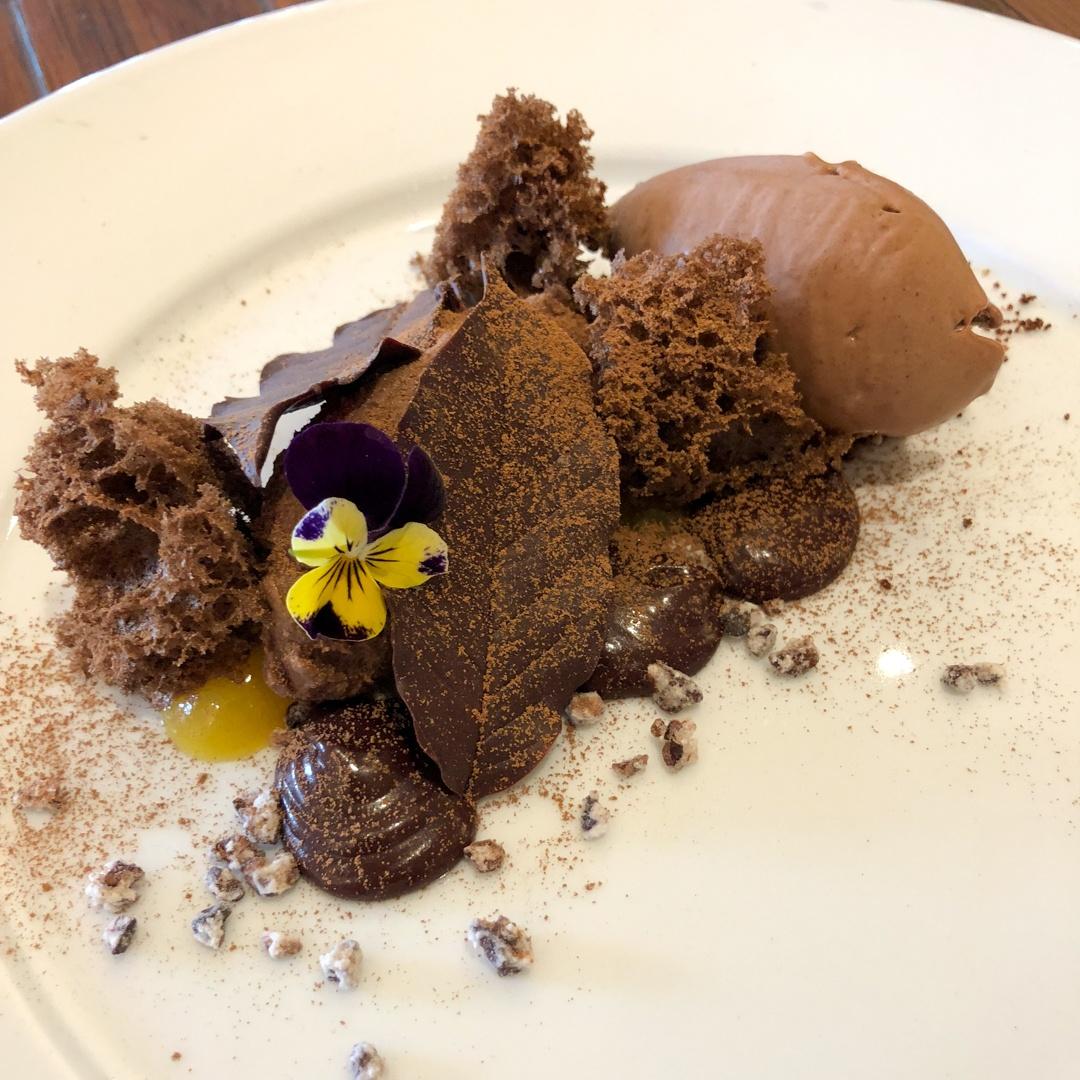
Chef
Chef Juan Carlos Ordoñez | Menú Taste Awards 2018 | 23 de Mayo del 2018 | Restaurante Casa Julián | Guayaquil, Ecuador
>
Smoked Tuna Carpaccio with miso stone crab, homemade pickles and mustard with “Salprieta Manaba”
Rita Palandrani - Manantiales Sureños (Still)
With such an interesting and complex range of flavours (sweet to spicy mustard, sour pickles, a bit of umami and the warm smoky spiciness of the tuna) I chose a still, medium minerality, low in sodium but fairly alkaline water from the Guarani Aquifer, which added a slight sweetness and allowed the pleasure of tastes and textures to linger a bit longer in the palate.
Horatio Bustos - Agua de las Misiones (Argentina) and Cedea (Italy)
As a first option, we pair the dish with Agua de las Misiones (Argentina), with low minerality, to contrast the acidity of the dish but enhancing its freshness. Then we match it with Cedea (Italy), again with low minerality but alkaline, to add body and balance the flavors of the dish.
Martin Riese - Antipodes (still) & Aqui Life (still)
The Tuna and the scrab will be matching with the very lower tds water from antipodes. The higher TDS and thick texture of Aqui Life paired nicely with the richness of the mustard seeds.
Michael Mascha - Raw Lava/Ice (sparkling) & Guitig
Prelude: Prior to the first dish arriving, I started with something I like to call “painting a landscape” which showcases extremes of what to expect in a water tasting using ROI and Svalbardi. I start with ROI and then take all the sensations away with Svalbardi. My audience has now a canvas on which I can paint. I paired this dish with Low Minerality and some small bubbles. It’s a complicated dish that could justify almost any pairings but I also wanted to stay within a progression of waters from low to high. If it would have been the perfectly smoked tuna only I would have matched it with Guitig.
Seabass and Prawn “Encocado”, Green plantain bollo, roasted avocadoes and coconut crisp
 Rita Palandrani - Andes Mountain (Chile)
Rita Palandrani - Andes Mountain (Chile)
To combine this delicate, mildly sweet, tender and crispy summery seafood course, I chose a water from the Andes Mountains. Andes Sparkling, with its low minerality, neutral ph and tiny bubbles, balanced and refreshing, gently enhanced the texture of the dish. Guests also seemed to love the story behind the water and the meaning of the "A" on the elegant bottle.
Horatio Bustos - Snasa (Norway) & Perlage (Poland)
At first, I paired this dish with Snasa (Norway) with very low minerality, which particularly highlighted the flavors of the fishes. Then I paired it with Perlage, a carbonated water from Poland with a good acidity and hardness, which accompanied the general intensity of the course.
Martin Riese - Veen (effervescent)
The slight carbonation fits perfectly to the fish dish and is not overpowering the nuances of the dish.
Michael Mascha - Abatilles (still) & Beloka (still) & Perlage
Supporting the soft creamy and fairly subtle flavors and mouthfeel of the main components of the dish with a medium bodied water was my first choice. The slight differences between Beloka and Abatilles were a surprise to many and enhanced the perception that water is not just water. I also did some samplings of contrasts with serving Perlage. Matching was favored by the audience but some people including me liked the contrast of the bubbles.
35 hour braised Short Rib, truffled sweet potatoes and goat cheese cream
Rita Palandrani - Yaktal Premium (Still) - Aqui-Live (Sparkling)
The earthiness of truffled potatoes and the tanginess of the cheese, together with the intensely savoury braised meat required a water with character. Initially, I chose Yaktal from Chilean Patagonia, alkaline with medium minerality and a moderate amount of bicarbonates, which gives this water a mellow mouth-feel and a good value in minerals to support the texture of the dish. But then I also wanted the structure and the full persistent flavors to be paired with a water of stronger character and body, and Aqui-Live Sparkling seemed to be an ideal candidate: alkaline with high TDS, which helped to balance the light acidity of the dish. The gentle bubbles and the creamy structure contrasted a bit but did not overpower the course, working even better with the tasty goat cheese cream and the consistency of the potatoes and the meat.
Horatio Bustos - Deep Gold (South Korea) & ROI (Slovenia)
As a first option, a water with relevant acidity and a great hardness, as Deep Gold from South Korea, highlighting especially the meat and the truffles. As a second option, Roi from Slovenia, naturally carbonated and with high minerality, relevant hardness and intense salinity and bitterness. This water cleaned the palate in a balanced way, not overwhelming the characteristics of the course.
Martin Riese - Guitig (Ecuador) & Roi (Slovenia)
We need by the main cause a more powerful water with higher TDS. The braised short rip is very rich in flavor and strong on the palate. Both waters cutting thru the richness of the beef and lifting up due to the carbonation level the palate but matching the richness tru minerality.
Michael Mascha - Aqui-Live (sparkling) & ORO and Socosani (still)
With this dish I wanted some texture and mouthfeel added from the water. Doing justice to the beef we matched it with higher mineral content waters and two different bubble sizes, artificial from Aqui-Live and natural from ORO. I also felt that Socosani still worked extremely well with the dish when focusing on the other non-meet parts of the dish.
Sparkling Fruit “Cocktail”
Horatio Bustos - Guitig (Ecuador)
I chose Guitig from Ecuador, naturally carbonated, to enhance flavors and spiciness in the mouth, as this water has a relevant hardness and minerality.
Martin Riese - No Pairing
Michael Mascha - No Pairing
I did not want to distract from the presentation and the effect of the carbonated fruits
65% Chocolate Mousse with orange spongecakes, 70% chocolate gelato with cacao leaves and passion fruit/cacao pulp gelée
Rita Palandrani - Waiakea (Still) - Solé (Added Carbonation) - Roi (Naturally Carbonated)
The high percentage of cocoa and tannins in the mousse and gelato, the subtle acidic notes of the orange and passion fruit, the overall textural complexity, required a water that could bring out the richness of the dish. I started with Waiakea, a low minerality and alkaline volcanic water from Hawaii, low in sodium but high in silica -which provides a pleasant mouth-feel- adding a mild sweetness and not overwhelming the flavor profile. I then moved to the Italian Solé, in the sparkling edition with soft and gentle carbonation, also low in sodium, slightly alkaline and with a good amount of silica. The low mineral content and the light bubbles cut through the chocolate, refreshing without disturbing the unique character of the course. I wanted to end the dinner with a glass of ROI from Slovenia, to contrast the previous perception and create a brand new experience with the addition of a strong mineral content, the power of the natural carbonation and a significant salty note.
Horatio Bustos - Guitig (Ecuador) & Roi (Naturally Carbonated)
Two carbonated waters for this dish, Guitig and Roi. The first one emphasizing the chocolate with a lower cacao percentage and the second one to enhance the cacao leaf which contains 80% cacao.
Martin Riese - Roi (Slovenia)
Roi is always an interesting water to showcase how extreme a water can taste. The 7400 TDS water fits incredible to the bitterness of the chocolate. Roi gives chocolate a completely new taste spectrum.
Michael Mascha - Snasa (still)
I was intrigued by the fact that the chef wanted his desert not sweet but focused on the bitter aspects chocolate. I wanted to support that notion by pairing it with a Super Low Minerality water that had just a little bit of weight. The chocolate taste was very prominent and perceived bitter due to the contrast with the super neutral low minerality water.




